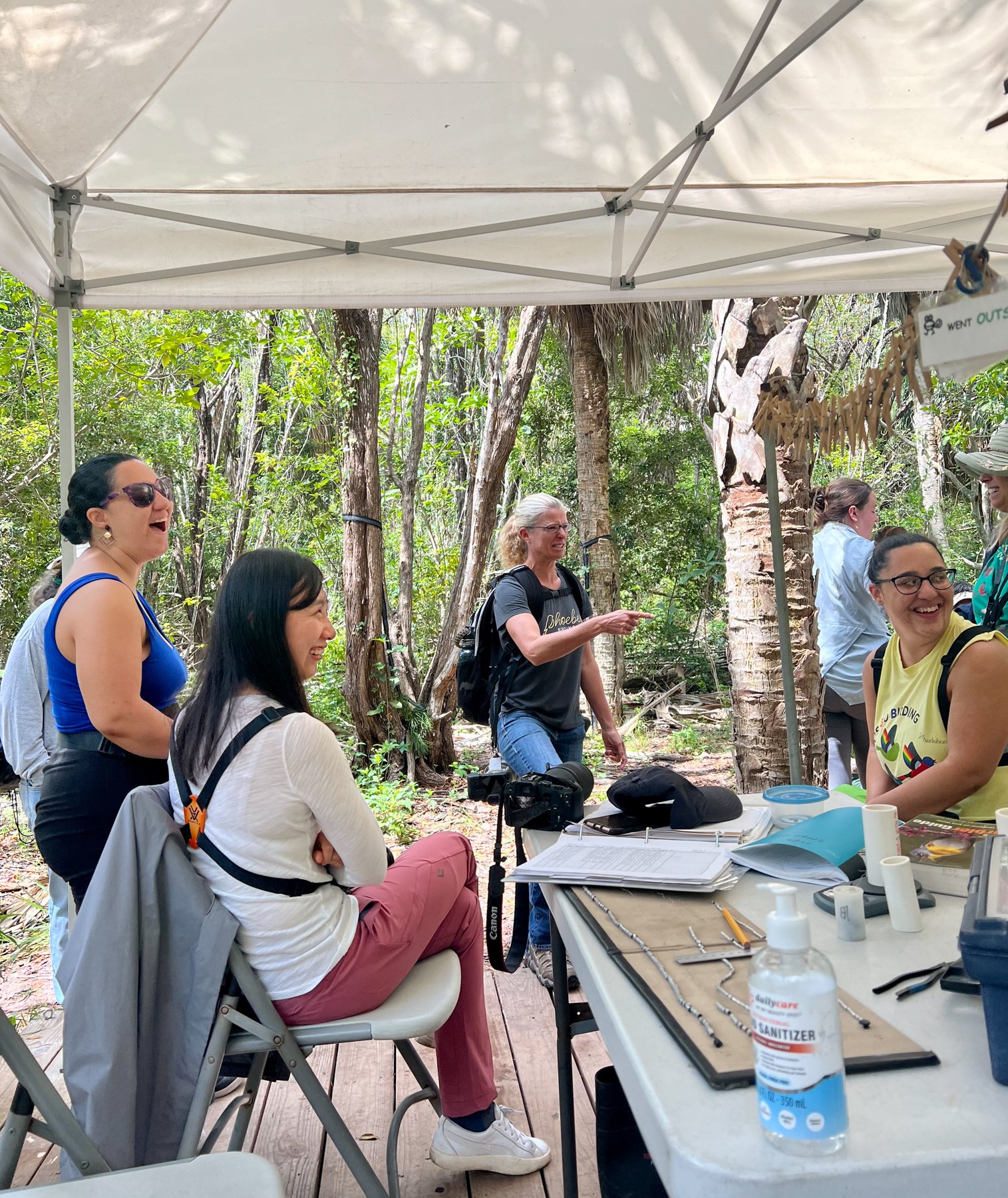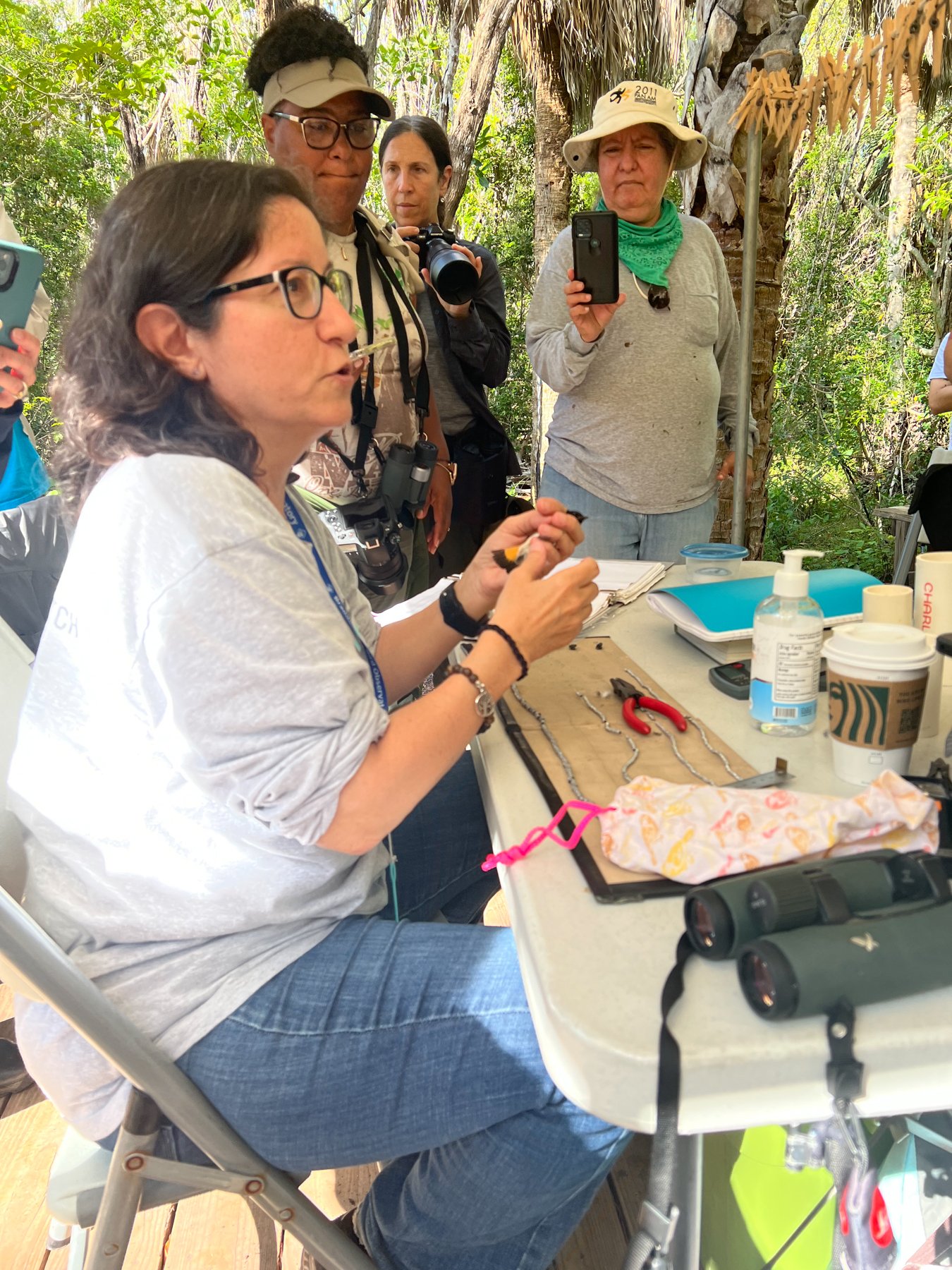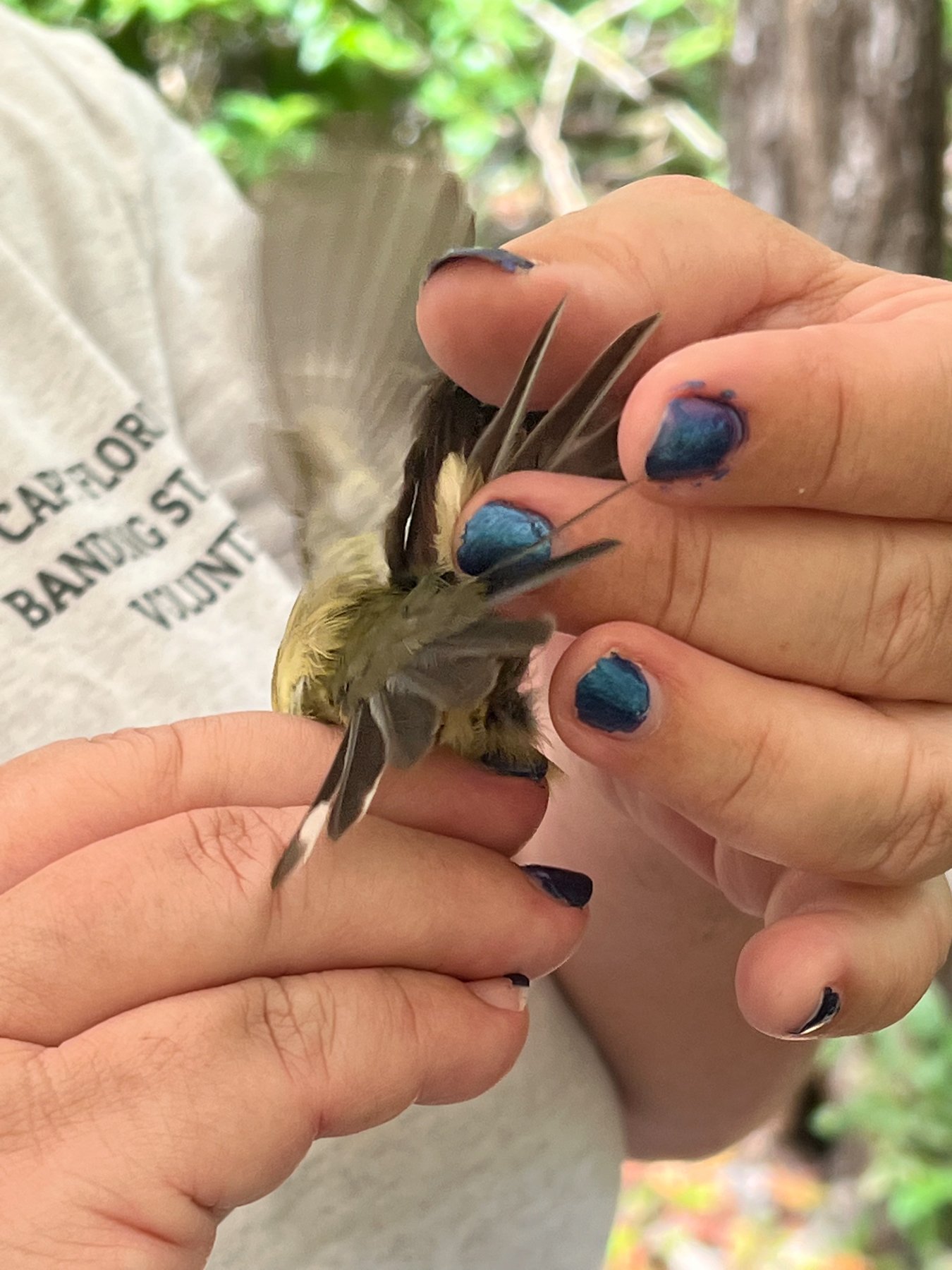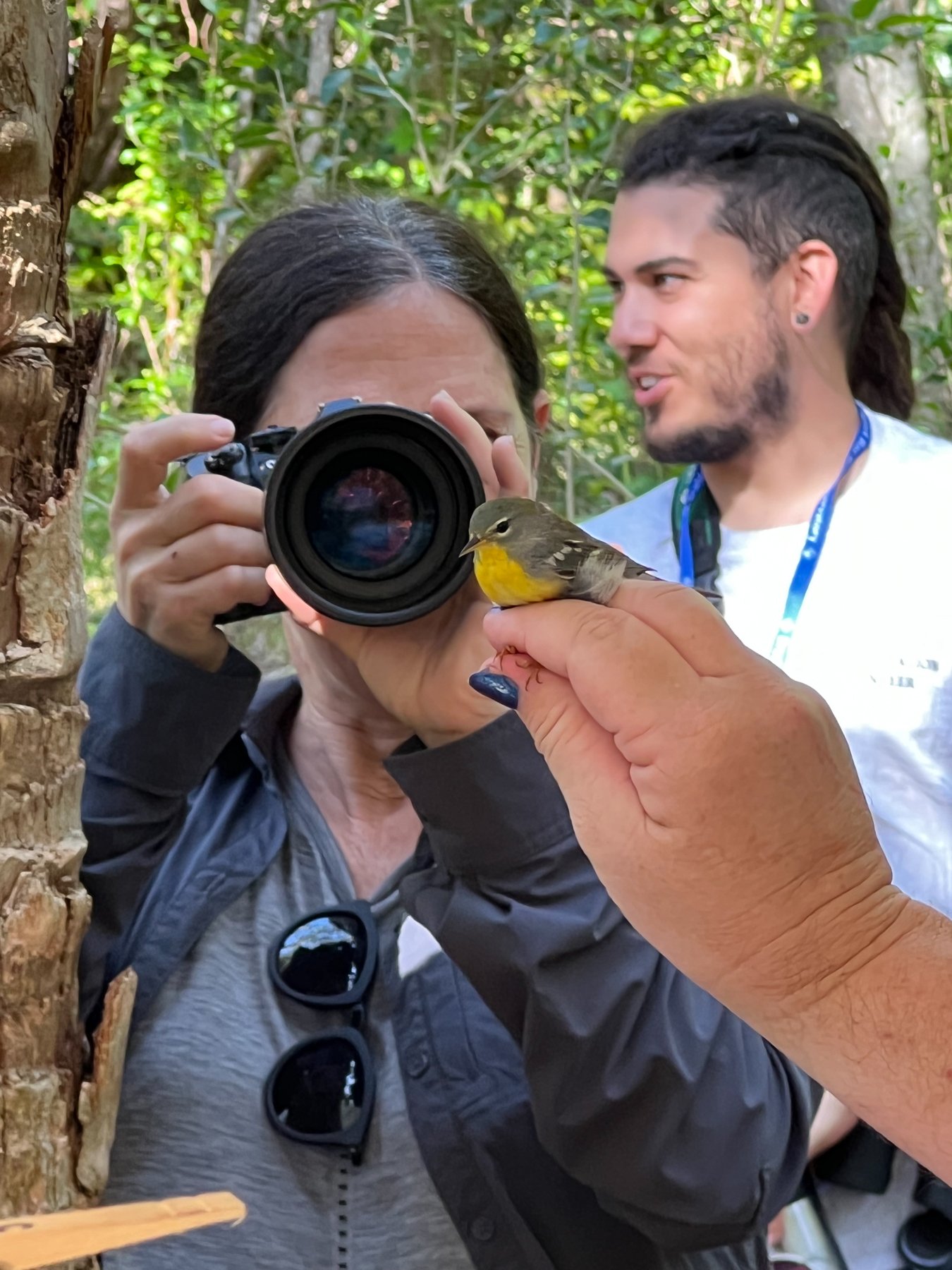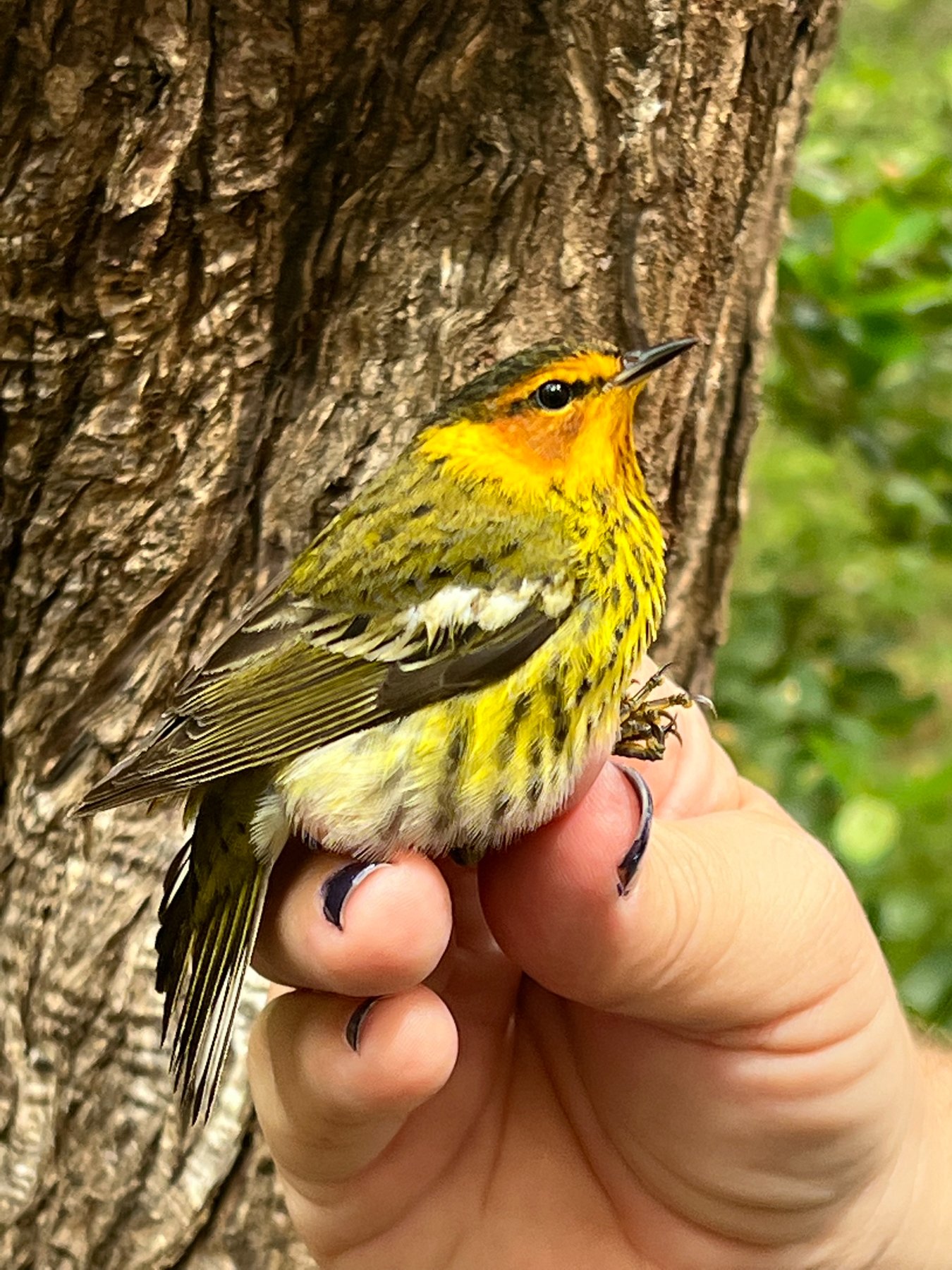Bird Walk Wrap-Up: Bill Baggs Cape Florida State Park, Spring 2022
Sunday, May 1, 2022 • Bill Baggs Cape Florida State Park • Report by Michelle Davis • Images Courtesy of Roxanne Featherly
Fourteen Phoebes gathered at Bill Baggs Cape Florida State Park (BBCFSP) the morning of May 1 to visit the Cape Florida Banding Station (CFBS), the longest-running banding station in South Florida founded in 2002. This park is one of the best places in the area to witness spring migration, as the birds often land here to rest and forage after a night flight over the ocean. A fast-moving rain shower greeted us when we gathered in the parking lot, so some of us ducked back into our cars and others found shelter under several big trees to wait it out. A spectacular rainbow filled the sky once the rain had passed, and it lasted long enough for a group photo.
CFBS director Michelle Davis led the group along the nature trail towards the station, stopping here and there along the way to look at various warblers moving through the shrubs. Common Yellowthroats and Western Palm Warblers worked the edge of the open area on the mound, and several fruiting strangler fig trees hosted Cape May and Black-throated Blue Warblers. We watched the way these warblers eat fruit from the inside out while it is impaled on their beaks, and noted the very different plumages between the males and females. Cape May Warblers were particularly abundant this morning, and were actively chasing each other through the canopy of the larger fruit-laden strangler figs.
Then, on to the banding station itself where the small group was treated to a morning spent in the tent with the banders and accompanying volunteers on net runs. Banders Miriam Avello and Mario Porcelli along with volunteers Cinthia Porcelli, Eddy Ibarra and Madison Janney kept the net checks going. Birds are gently extracted from the nets and placed individually into bags where they calmly await their turn to be banded and released. The banders apply a small aluminum band to the leg with a unique number and then collect data about species, age, sex and physical condition from each bird. The whole process takes about one minute for a bird, and then it is released to continue with its migration.
The data collected tells us many things such as distances traveled and how long birds can live. Birds banded in Cape Florida have been found as far away as Puerto Rico to the south and Newfoundland to the north. A resident Northern Cardinal was recorded to live to 12 years old, and an Ovenbird returned to BBCFSP for 9 winters. The birds that we only see once or for a short time still give us information about the quality of the local habitat for migrants and their ability to use the restored native habitat to refuel for the long flights ahead of them.
Birds We Saw
White-crowned Pigeon -2
Common Ground-dove -3
Magnificent Frigatebird -1
Gray Kingbird -1
Ovenbird -5 (one in the hand)
Black-and-white Warbler -2 (one in the hand)
Common Yellowthroat -5
American Redstart -3
Cape May Warbler -16 (one in the hand)
Northern Parula -4 (one in the hand)
Black-throated Blue Warbler -3 (a male and a female in the hand)
Western Palm Warbler -6
Northern Cardinal -5
Painted Bunting -1
Indigo Bunting -1

